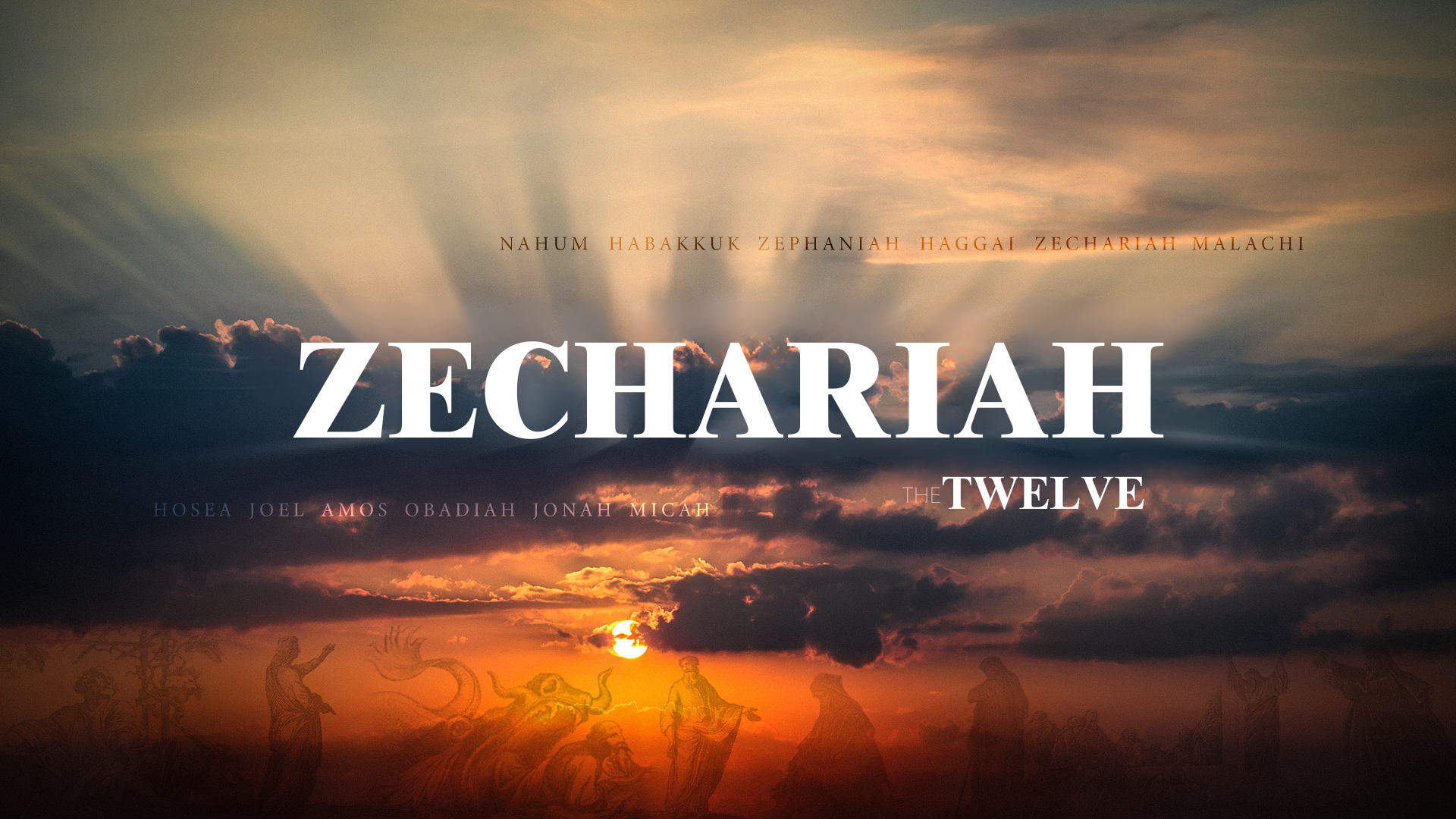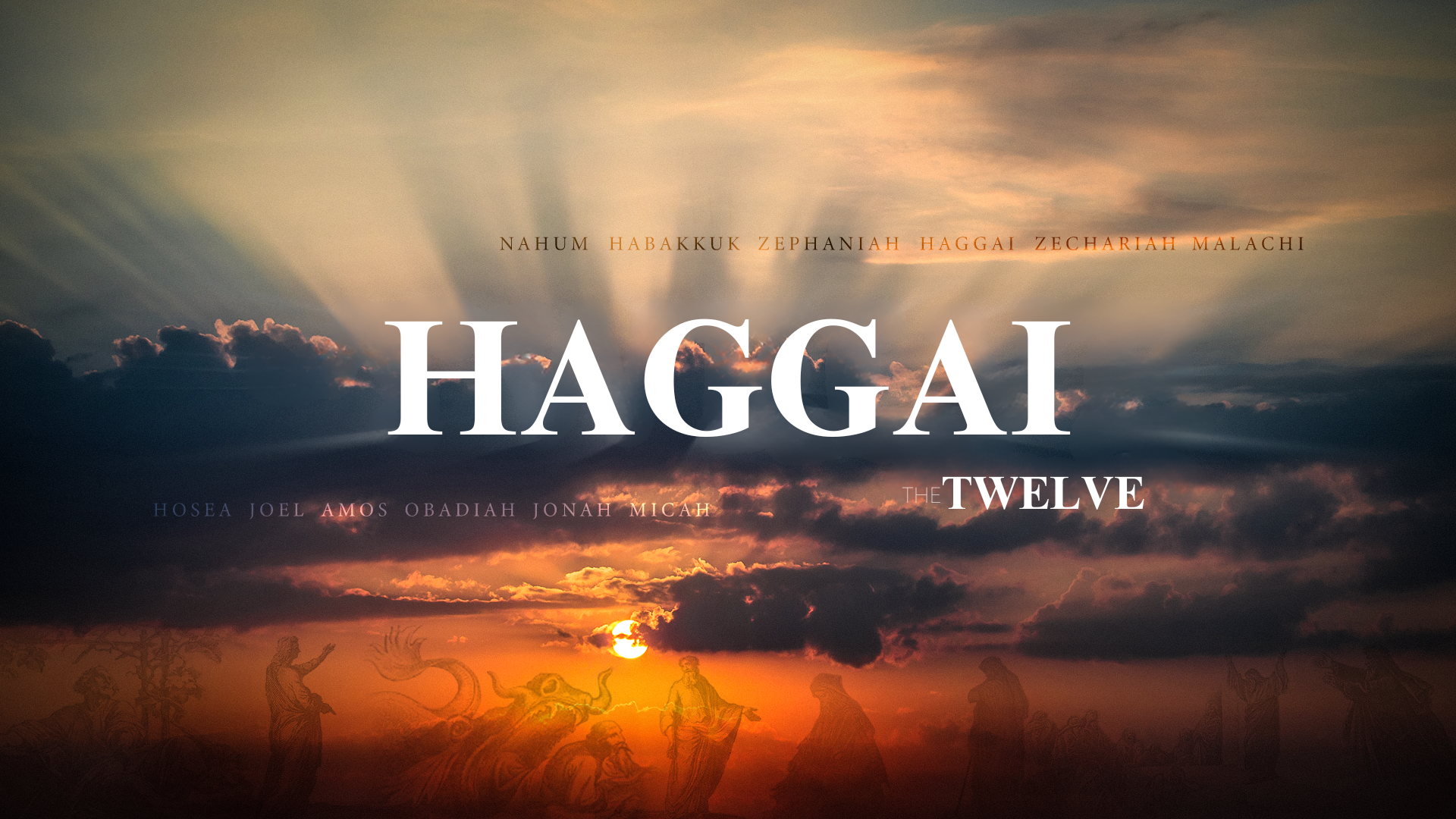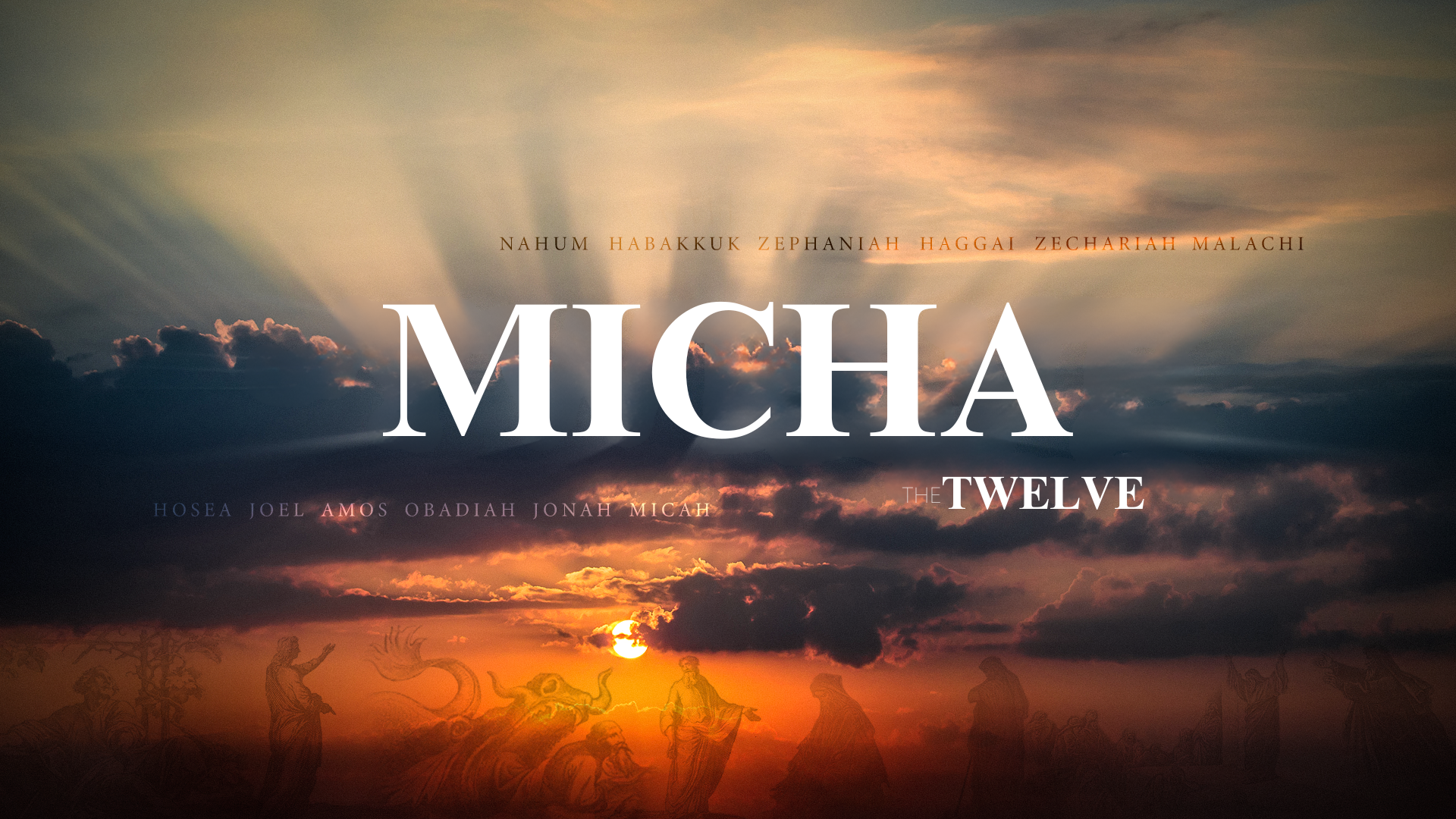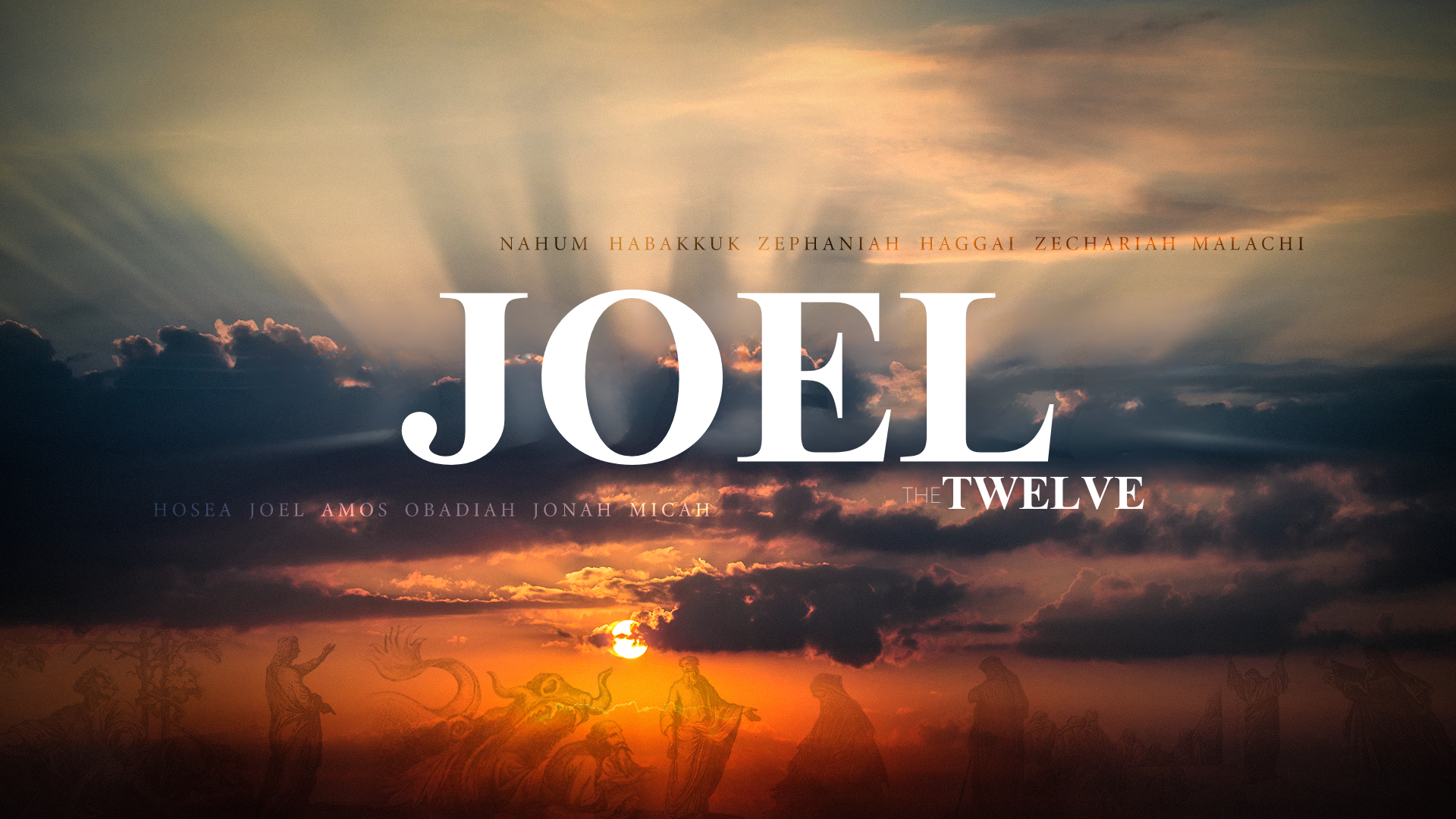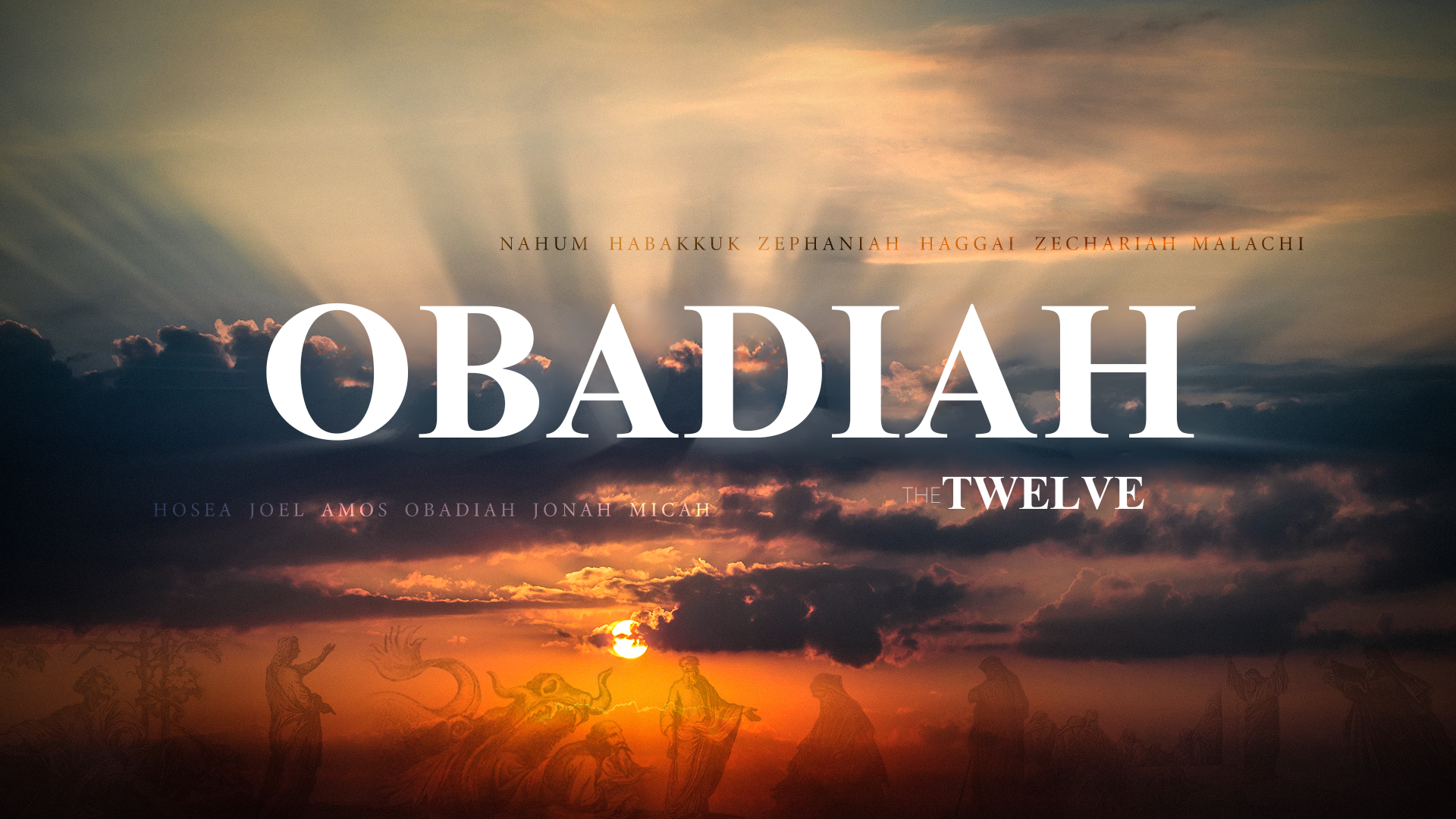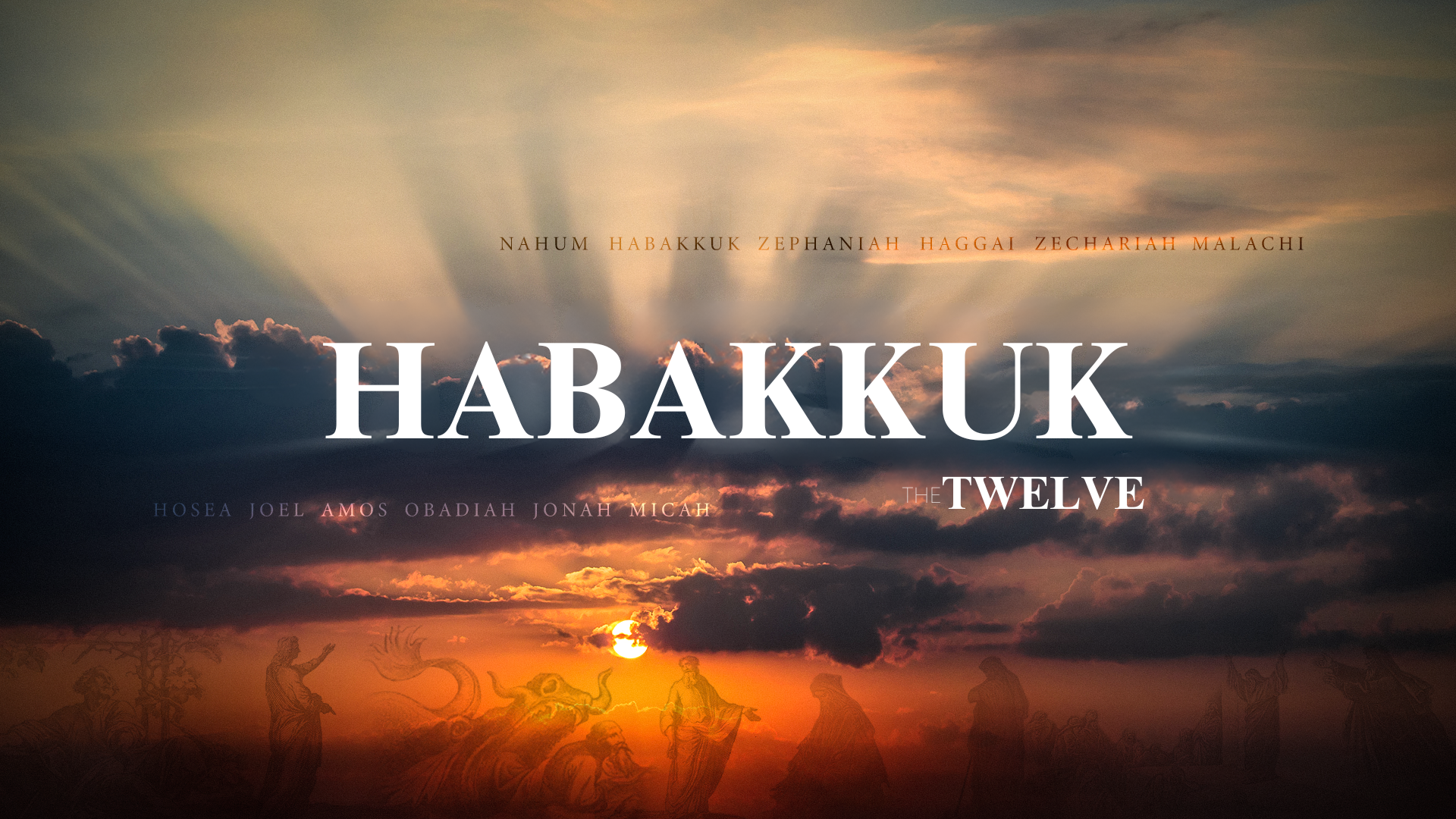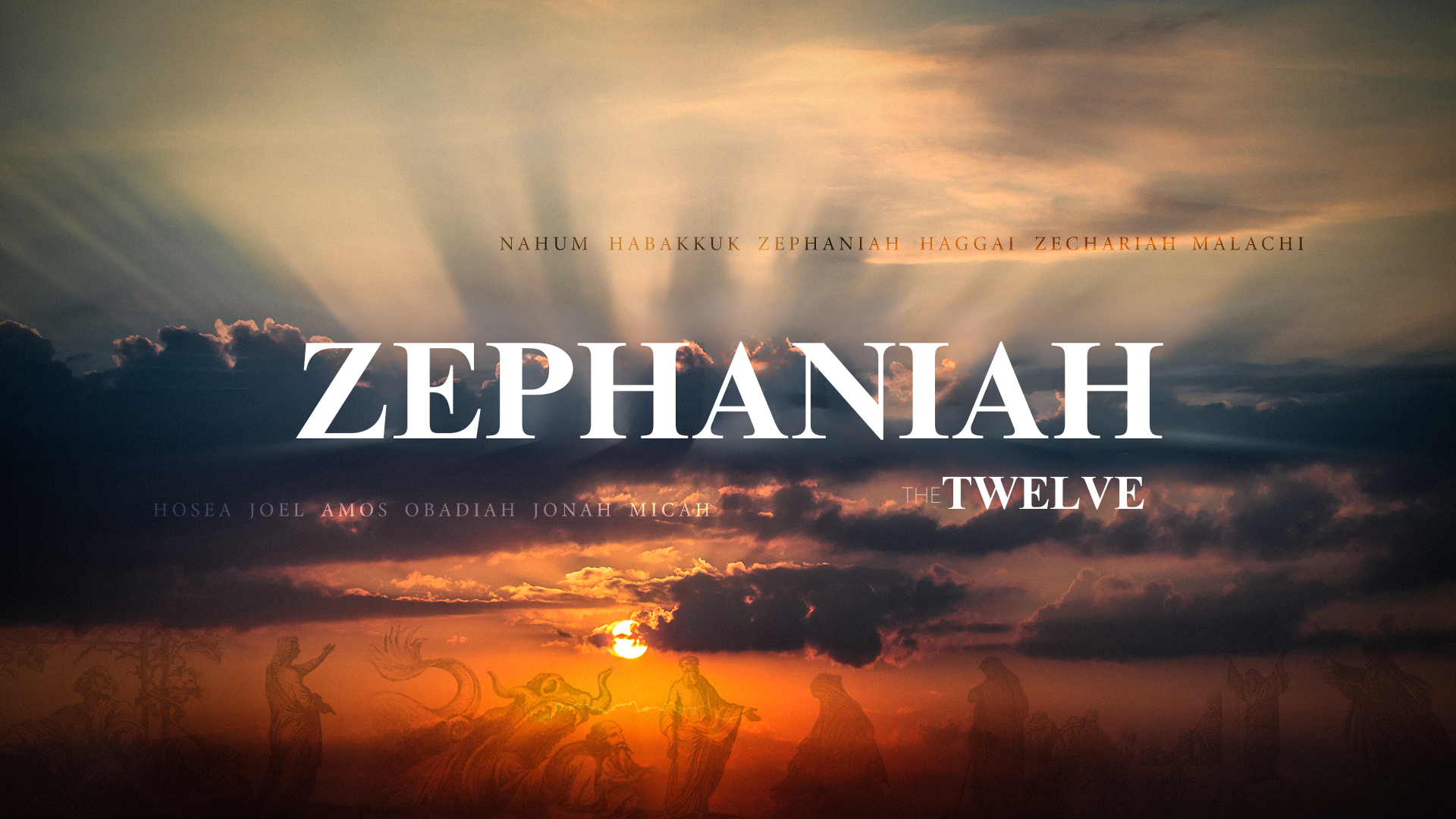MANUSCRIPT
Tonight, we continue our study of the prophecy of Zechariah in chapter 5.
As we begin, let’s review.
Verses 1.1-6 affirm the importance of repentance to our relationship with God.
The first vision reveals the Angel of the Lord, the Messiah, interceding for His people, asking Yahweh for mercy, and Yahweh pledges to remember and bless them.
In the second vision, God promises to judge those nations He used to scatter Israel, because they furthered the disaster.
The third vision, the man with the measuring line, reminds us that God will yet glorify Jerusalem, and that the Jews remaining in Babylon must flee to Judah.
The first three visions are related to the physical restoration of the nation.
But in visions four and five, we reached the pinnacle of the visionary cycle, as in the fourth vision, Joshua the high priest, representing the nation of Israel, is forgiven and cleansed from sin, and Israel’s restoration is promised, that they will serve the Lord according to His covenant purpose as a kingdom of priests and a holy nation. And in the fifth vision, we saw the golden lampstand, representing primarily the Messiah, but also Israel and the church as the sources of God’s light in the world, powered by the Holy Spirit. These two visions address the spiritual restoration of the nation.
At this point in our study, I’ll start to reflect back on the preceding visions to illustrate the chiasm formed by these eight visions. a chiasm is a literary technique used by the Holy Spirit and the human authors of Scripture to build and use relationships within the text to draw out more meaning as passages are compared to each other. 1 and 8, 2 and 7, 3 and 6, 4 and 5.
Tonight, we look at the sixth vision, which, in the chiastic form, would relate back to the third vision, the vision of the man with the measuring line. In that vision, God assured Israel of His plan for Israel, that He would again rebuild and glorify Jerusalem and the entire nation, and He would be their defender and glory. Here in the sixth vision, we see God’s plan for the wicked, as He turns His attention to those who are not His people, and He responds to them with a declaration of judgment.
Turn to Zechariah 5 and let’s examine the text.
What it is.
As we begin, let’s look at what Zechariah saw.
1 Again I lifted my eyes and saw, and behold, a flying scroll! 2 And he said to me, “What do you see?” I answered, “I see a flying scroll. Its length is twenty cubits, and its width ten cubits.”
I love the dialogue between Zechariah and the interpreter angel. ”behold, a flying scroll!” “What do you see?” “A flying scroll” . I’ll bet he enjoyed writing that.
There are some important details to note here.
First, obviously, it’s a scroll. Scrolls were used in cultures of this era in the 6th century BC as a way to record written languages in an enduring way. They were made in a fairly simple way that was still in use in the first century. generally a scroll was constructed from either papyrus or leather as a writing surface, then fastened to two pieces of wood, which allowed the writing surface to be rolled around the sticks, often toward each other. as we noted last week in Luke 4, Jesus read from a scroll in the synagogue at Nazareth. Scrolls were of varying lengths. ones used for business records might be fairly short, while others in the synagogue or temple use could be very long. For example, the Great Scroll of Isaiah was 24 feet long by only about 10 inches wide.
This one is much, much larger than that, thirty feet by fifteen feet. scrolls are for writing, like a pad of paper today. so you would expect that if Zechariah is shown a scroll, it would have something written on it, and this one does. we’ll see what the writing is in the next passage.
But this is no ordinary scroll. Besides its size, it’s flying. There’s no mention of how it’s flying, only that it is flying. Since there are no other flying scrolls in the Scripture (throwing them doesn’t count), we have to consider what this might mean. Certainly, we can conclude that the Lord’s intent is for this scroll to communicate to people, since it is so open and evident. The writing on the scroll is visible and knowable, not hidden, but out in plain sight, actively moving about through the world.
And finally, Zechariah tells us the exact dimensions of the flying scroll: twenty cubits long and ten cubits wide, or thirty feet long by fifteen feet wide. When we think about that in terms of dimensions or objects we are familiar with, many of us might think of a very large room in a home or building. But a Jewish priest like Zechariah would immediately relate this to something else: these dimensions, twenty cubits by ten cubits, are the dimensions of two locations which are important to the worship of God: the holy place in the tabernacle, and the porch of Solomon’s Temple. We don’t know the exact dimensions that were used for the construction of Zerubbabel’s Temple, but based on what we do know, the builders may well have adopted these dimensions that had been used for the tabernacle for the Holy Place.
So taken together, I suggest that the elements of the scroll reported by Zechariah are meant to draw our attention to a few key truths:
God is a communicative God. He’s not a God who created the world and then sits back to see what happens. He has always been involved in His creation, particularly in relationship to human beings, the pinnacle of His creation, and He continues that here as He gives this series of visions to encourage and challenge Israel. The only object in this vision, a flying scroll written on both sides, is a clear statement from Yahweh that His communication to humanity is alive and enduring, not contained in forgotten books, or worse, the fallible memories or oral traditions of people. Instead, it is exactly as described by Hebrews 4.12-13. 12 For the word of God is living and active, sharper than any two-edged sword, piercing to the division of soul and of spirit, of joints and of marrow, and discerning the thoughts and intentions of the heart. 13 And no creature is hidden from his sight, but all are naked and exposed to the eyes of him to whom we must give account.
This scroll, representing the totality of God’s word, but most particularly His Law, is a physical representation designed to capture our attention, but then direct our attention to the spiritual truth conveyed more directly in Hebrews. and our ability to understand that Word in its fullness comes from the Holy Spirit, as our Teacher, as we discovered last week. He is the source of our understanding of Scripture, as we learn in the gospel of John 14.16-17, 26 . 16 And I will ask the Father, and he will give you another Helper, to be with you forever, 17 even the Spirit of truth, whom the world cannot receive, because it neither sees him nor knows him. You know him, for he dwells with you and will be in you. 26 But the Helper, the Holy Spirit, whom the Father will send in my name, he will teach you all things and bring to your remembrance all that I have said to you.
As this flying scroll is physically living and active, so also is the word of God spiritually living and active, through the work of the Holy Spirit to give us understanding and apply the word to our lives. And chief among the Spirit’s tasks regarding the word is to bring about conviction in the hearts of believers, and to convey the certainty of judgment concerning sin to unbelievers, which is the intent of this vision of the flying scroll.
And we note that when God gives precise measurements for different things or places, as He does here, we should look for meaning. It’s not a coincidence that this scroll is the same size as the Holy Place of the tabernacle, where the golden lampstand from the fifth vision was located. All of the elements of the Holy Place communicate the intent of God to show forth His light and presence through Israel to the world. And while this is a message of hope and comfort to His people, primarily this is a message to those who are not His, the unrepentant wicked, those who reject the sovereign authority of the Maker of Heaven and Earth and His clear standards of truth and justice. the connection between the flying scroll and the Holy Place of His tabernacle highlights a deep truth: Yahweh God is a holy God, and He will ultimately judge those who willfully violate and disregard His nature and character revealed in His word. all who would see this scroll and the word of God written there would know that God is holy, and that He says to His people, “Be holy even as I am holy”. And the opposite of that challenge to His own is a staggering promise of judgment to those who regard God and His word as being of no value or meaning.
So we’ve seen in this description of what the vision is that God is declaring His word for all the world to see. He would declare His own holiness and His requirement that His people be holy, set apart, also. and those who would not be transformed by the truth, who would refuse His grace, who would shake their fist in His face in persistent, unrepentant disobedience, would suffer His judgment.
What it means
Now let’s observe why and how God brings about this judgment.
3 Then he said to me, “This is the curse that goes out over the face of the whole land. For everyone who steals shall be cleaned out according to what is on one side, and everyone who swears falsely shall be cleaned out according to what is on the other side. 4 I will send it out, declares the Lord of hosts, and it shall enter the house of the thief, and the house of him who swears falsely by my name. And it shall remain in his house and consume it, both timber and stones.”
God declares His purpose. This is not so much a call to repentance that evidently has been given and rejected. Instead, this scroll goes forth as a curse, a calling down of God’s judgment. Scrolls are often instruments of announcing God’s judgment, with the ultimate example being the scroll of Revelation, five and six, which Jesus opens by breaking the seals, and unleashes the final judgment of God. This scroll in Zechariah is very similar to another scroll found in Ezekiel 2.9-10. 9 And when I looked, behold, a hand was stretched out to me, and behold, a scroll of a book was in it. 10 And he spread it before me. And it had writing on the front and on the back, and there were written on it words of lamentation and mourning and woe. As we have seen before, we see again a connection between the former prophets and Zechariah as a latter prophet. As a scroll foretold judgment then, so this scroll foretells judgment now.
The scroll and its curse goes out over the face of the whole land. The language is all-encompassing. There is no place that is not subject to this curse. Based on the Hebrew word ‘eretz’ translated here as “land,” the primary meaning is for Israel, which we will see, but the fact of God’s righteous judgment, of course, applies to all people who break God’s law yet reject the gospel.
Here we learn exactly what was written on the two sides of the flying scroll. This scroll, like other judgment scrolls, is written on both sides. The scroll contains two of the ten commandments of Exodus 20. So two of the ten “words” given by God Himself to Moses on Mount Sinai are written on the scroll, one on one side and another on the other side.
First, a little background on the commandments. When God gave Moses the commandments on Sinai, He wrote them Himself in a particular way. Exodus 32.15-16 says Then Moses turned and went down from the mountain with the two tablets of the testimony in his hand, tablets that were written on both sides; on the front and on the back they were written. 16 The tablets were the work of God, and the writing was the writing of God, engraved on the tablets.
The Jews have long understood the commandments to be in two groups or tablets. The first five represent man’s responsibility to God, and the second five represent man’s responsibility to man. These correlate to the two greatest commandments named by Jesus in the gospel of Matthew 22.37-40. When questioned by a scribe about the Law, Jesus replied, 37 And he said to him, “You shall love the Lord your God with all your heart and with all your soul and with all your mind. 38 This is the great and first commandment. 39 And a second is like it: You shall love your neighbor as yourself. 40 On these two commandments depend all the Law and the Prophets.”
The commandments were arranged something like this.
As we examine the commandments and compare them to the text of Zechariah 5, we see something interesting. The first law mentioned in Zechariah is stealing. For everyone who steals shall be cleaned out according to what is on one side. That is the eighth commandment, the middle of the tablet devoted to the Law’s demands related to other people. The second law is swearing falsely by the name of Jehovah. and everyone who swears falsely shall be cleaned out according to what is on the other side. This commandment is the third commandment, the middle of the tablet devoted to the Law’s demands related to God.
So why these two out of the ten? It’s impossible that God would reserve judgment for only those who broke these two laws and let those who broke any of the other eight go free. But there must be some reason He chose these two, for James 2.10 says 10 For whoever keeps the whole law but fails in one point has become guilty of all of it.
I think it’s related to their position in the order of the ten. They are each the middle commandment of each of the tablets, and in that sense are meant to represent the whole of the Law.
This is the truth revealed also by the exact dimensions of the scroll corresponding to the Holy Place of the tabernacle. God will judge the deeds of humanity not based on man’s opinions of right or wrong, or some relative notion of “truth,” but by the divine, eternal truth of God’s own righteousness. His holiness will be the standard, and all people will fail to meet it. Thus, everyone who steals shall be cleaned out according to what is on one side, and everyone who swears falsely shall be cleaned out according to what is on the other side.
“Cleaned out” is a powerful word. It means ‘to purge’ and it is a powerful description of God’s judgment of the wicked. The judgment will not come yet, as the weeds are allowed to continue to grow among the wheat, but someday the judgment of Revelation 20 will come to pass, and those who reject the gospel of grace will suffer eternal damnation.
The last verse is a fitting condemnation.
4 I will send it out, declares the Lord of hosts, and it shall enter the house of the thief, and the house of him who swears falsely by my name. And it shall remain in his house and consume it, both timber and stones.”
God Himself will bring about this curse over the whole earth. He will send it out, and like His word always does, it will accomplish His purposes. Isaiah 55.11 is true.
so shall my word be that goes out from my mouth; it shall not return to me empty, but it shall accomplish that which I purpose, and shall succeed in the thing for which I sent it.
And this three-part curse of God upon the wicked will surely come to pass.
God’s judgment will enter the house, or life, of the wicked. The word of God will not be kept out. There is nothing anyone can do to evade the justice of God when it comes. Numbers 32.23: be sure your sin will find you out.
God’s judgment will remain in the house of the wicked. It will lodge there, abide there, take up residence there. For just as the wicked sought out and stayed in the places and habits and patterns of sinfulness, so will God’s judgment scroll come and abide with them, to their eternal destruction.
And finally, God’s judgment will entirely consume the life, the house of the wicked. Just as Leviticus 14 mandates the destruction of a house contaminated with leprosy, so will the body and life of every unrepentant sinner be utterly destroyed. Psalm 104.35 pleads for this judgment. 35 Let sinners be consumed from the earth, and let the wicked be no more!
I want to share a lengthy but important quote from commentator David Baron, himself a messianic Jew. he says this: “The God of Israel has two methods in dealing with sin and removing iniquity, both of which are in perfect accord with the absolute holiness of His character. One of these methods – the one He delights in – is the method of grace. But what about those who persist in their wickedness, and in spite of the marvelous display of God’s grace, will not learn righteousness, but continue even ‘in the land of uprightness’ to deal unjustly and will not behold the majesty of Jehovah? With them, God’s method is that of judgment. Sin must be purged away, iniquity must be stamped out in the city of God; and when the sinner is so wedded to his sin that he is no longer separable from it, he becomes the object of God’s curse, and must be “cleansed away” from the earth.”
Application
We’ve touched on points of application already, but let’s review.
God is holy and cannot tolerate sin. Psalm 5.4-6 4 For you are not a God who delights in wickedness; evil may not dwell with you. God’s perfect holiness is the standard for His judgment. Romans 3.23 23 for all have sinned and fall short of the glory of God,
To reject the gospel is to receive God’s judgment. Hebrews 10.26-31 26 For if we go on sinning deliberately after receiving the knowledge of the truth, there no longer remains a sacrifice for sins, 27 but a fearful expectation of judgment, and a fury of fire that will consume the adversaries. 28 Anyone who has set aside the law of Moses dies without mercy on the evidence of two or three witnesses. 29 How much worse punishment, do you think, will be deserved by the one who has trampled underfoot the Son of God, and has profaned the blood of the covenant by which he was sanctified, and has outraged the Spirit of grace? 30 For we know him who said, “Vengeance is mine; I will repay.” And again, “The Lord will judge his people.” 31 It is a fearful thing to fall into the hands of the living God.
Just as judgment is certain without Christ, so salvation is certain with Him. Acts 4.12 12 And there is salvation in no one else, for there is no other name under heaven given among men by which we must be saved.”
The Law cannot save us – only Jesus Christ can. Galatians 3.10-14 10 For all who rely on works of the law are under a curse; for it is written, “Cursed be everyone who does not abide by all things written in the Book of the Law, and do them.” 11 Now it is evident that no one is justified before God by the law, for “The righteous shall live by faith.” 12 But the law is not of faith, rather “The one who does them shall live by them.” 13 Christ redeemed us from the curse of the law by becoming a curse for us—for it is written, “Cursed is everyone who is hanged on a tree”— 14 so that in Christ Jesus the blessing of Abraham might come to the Gentiles, so that we might receive the promised Spirit through faith.
I urge you tonight – if you don’t know Jesus, take the step of faith and come to Christ.

Taught by Mike Morris
Associate Pastor of Verse By Verse Fellowship
The Twelve Series
